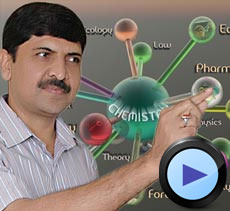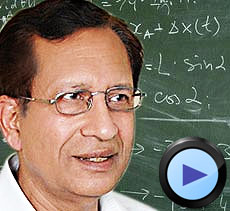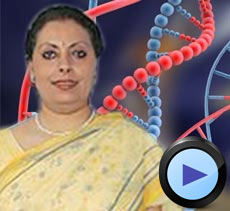| Living World |
| Introduction, What is living? |
| Diversity in the Living World and Nomenclature, Rules of binomial nomenclature, Advantages of scientific names, Codes of nomenclature |
| Classification: Classical and Modern taxonomy |
| Taxonomic Categories: species, genus, family, order, class, phylum, kingdom |
| Taxonomical Aids: herbarium, botanical gardens:museums, zoological parks, key |
| Objective Questions |
| Biological Classification |
| Biological classification, Three kingdom classification |
| Five kingdom classification, Advantages and Drawbacks |
| Kingdom Monera: archaebacteria, eubacteria, photoautotrophic, chemosynthetic, saprophytic, symbiotic, parasitic bacteria |
| Reproduction in bacteria, Endospores, Sexual reproduction, Cell structure, Archaebacteria, Mycoplasma |
| Kingdom Protista: protists structure, locomotion, nutrition and reproduction in protists |
| Photosynthetic, structure, reserve foods, reproduction, economic importance of diatoms |
| Dinoflagellates |
| Euglenoids, slime mould |
| Protozoan Protista |
| Kingdom -Fungi |
| Phycomycetes, zygomycetes |
| Ascomycetes |
| Basidiomycetes, deuteromycetes |
| Kingdom Plantae and Animalia |
| Viruses and Viroids |
| Lichens and Mycorrhizae |
| Objective Questions |
| Plant Kingdom |
| Introduction and Types of classification |
| Algae |
| Chlorophyceae |
| Phaeophyceae, Rhodophyceae |
| Bryophytes |
| Liverworts and Mosses |
| Pteridophytes, Selaginella |
| Two types of Spores, Life cycle of Fern |
| Spermaphytes |
| Gymnosperms |
| Life cycle of Cycas and Pinus |
| Angiosperms |
| Alteration of generation |
| Objective Questions |
| Animal Kingdom |
| Basis of clasification, Levels of organisation, Circulatory system, Body symmetry |
| Diploblastic and Triploblastic Organization, Nature of Coelom, Body plans |
| Segmentation, Notochord, Classification of Animals |
| Phylum- Porifera |
| Phylum- Coelenterata |
| Phylum- Ctenophora |
| Phylum- Platyhelminthes |
| Phylum- Aschelminthes |
| Classification of Phylum- Aschelminthes |
| Phylum- Annelida |
| Phylum- Arthropoda, characters, features, advancement over Annelids |
| Classification of Phylum- Arthropoda |
| Differences between: Centipedes and Millipedes, Culex and Anopheles, Butterfly and Moth, Insects and Spider, Different types of Mosquito |
| Phylum- Mollusca |
| Phylum- Echinodermata |
| Phylum- Hemichordata |
| Phylum- Chordata(protochordata) |
| Subphylum- Vertebrata |
| Pisces Classification, Differences between Shark and Ray |
| Class Osteichthyes, General Characters and Examples |
| Lung- Fishes |
| Class- Amphibia |
| Class- Reptilia |
| Lizards and Snakes |
| Crocodile: Alligator and Gavialis |
| Class- Aves |
| Class- Mammalia |
| Class- Mammalia(theria) |
| Classification of Eutheria |
| Objective Questions |
| Morphology of Flowering Plants |
| Introduction, Angiosperm diversity, Parts of flowering plant, Parts of typical root |
| Modifications of Tap Root, Modification of Adventitious Roots |
| Morphology of stem, buds, branching of stem, undrground modification of stem |
| Modification of stem, wek stems, underground stem |
| Leaf, Parts of leaf, Venation, Types of leaves |
| Phyllotaxy, Modifications of leaves, Functions of leaves |
| Inflorescence, Flowers |
| Parts of flowers, calyx, corolla, epicalyx, aestivation, perianth |
| Androecium, Gynoecium, Placentation |
| Fruits |
| Seed, Structure of dicotyledonous seed, Structure of monocotyledonous seed, |
| Semi-technical description of a typical flowering plant, Floral diagram |
| Description of some important families: fabaceae, solanaceae, lilliaceae |
| Objective Questions |
| Anatomy of Flowering Plants |
| Anatomy of flowering plants, Tissues |
| Meristematic tissues |
| Permanent tissues |
| Simple permanent tissues |
| Complex permanent tissue- Xylem |
| Complex permanent tissue- Phloem |
| The tissue system, Epidermal tissue system |
| Ground and Vascular tissue system |
| Anatomy of dicotyledonous and monocotyledonous plants, Dicotyledonous root |
| Monocotyledonous root |
| Dicotyledonous stem |
| Monocotyledonous stem |
| Dicotyledonous leaf |
| Monocotyledonous leaf |
| Secondary growth: Vascular cambium |
| Cork cambium |
| Secondary growth in roots |
| Objective Questions |
| Structural Organisation in Animals |
| Morphology of Earthworm |
| Anatomy of Earthworm |
| Digestive system of Earthworm |
| Blood vascular system of Earthworm |
| Excretory system of Earthworm |
| Nervous system of Earthworm |
| Reproductive organs of Earthworm |
| Copulation and Cocoon formation |
| Morphology of Cockroach |
| Morphology-Mouth/Thorax |
| Morphology-Abdomen |
| Anatomy-Body wall/Endoskeleton-fat body |
| Digestive system of Cockroach |
| Blood vascular system of Cockroach |
| Respiratory system of Cockroach |
| Excretory/Endocrine system of Cockroach |
| Nervous system of Cockroach |
| Reproductive system of Cockroach |
| Introduction - RANA TIGRINA(Indian Frog) |
| Anatomy- Digestive system of frog |
| Respiratory system of frog |
| Blood vascular system of frog, Blood, Blood corpuscles, Blood clotting, Heart structure, Working of heart |
| Renal portal system of frog, Hepatic portal system, Significance of hepatic portal system, Lymphatic system |
| Excretory system of frog |
| Nervous system of frog, Brain, Fucntion of brain, Spinal cord, Cranial nerves and Spinal nerves, Autonomic nervous system |
| Sense organs, Structure of eye of frog, Working of eye, Structure of ear of frog, Endocrine glands |
| Reproductive system of frog, Economic importance |
| Structural organisation in animals, Different tissue function in our body, Epithelial tissue, Simple epithelial tissue |
| Compound epithelial tissue |
| Glandular epithelium, Types of glands, Modified epithelia, Functions of epithelial tissue |
| Connective tissue |
| Loose connective tissue |
| Dense connective tissue |
| Specialized connective tissue, Types of cartilages |
| Bone, Microscopic structure of decalcified mammalian bone, Types of bone, Types of bone marrow |
| Blood, Function of blood, Plasma protein, Function of blood plasma |
| Formed elements, Erythrocytes, Hematocrit value, Erythrocytes sedimentation rate, Function of RBC |
| Leucocytes, Granulocytes, Difference between Red blood and White blood corpuscles |
| Thermbocytes, Human blood corpuscles, Blood coagulation, Clotting factors, Blood clotting prevention |
| Lymph, Difference between Lymphatic and Blood capilllaries |
| Reticular and pigmented connective tissue, Mucoid tissue, Functions of connective tissue |
| Types of muscles, Characters of both unstriped and striped muscles |
| Neurons, Components and Types of Neurons, Nerve fibres, Nerves, Neuroglia, Ependymal cells, Neurosecretory cells |
| Objective Questions |
| Cell The Unit of Life |
| Introduction, Discovery of cells, Cell theory and its significance |
| Diversity of cell, Open system, Cell types, Structure of bacterial cell |
| Prokaryotic cells, Different layers of bacterial cells, Grams positive and Gram negative |
| Components of bacterial cells: cytoplasm, nucleoid, plasmids |
| Inclusion bodies: flagella, pilli and fimbriae, Difference between pilli and fimbriae |
| Eukaryotic cells, Difference between: eucaryotic and prokaryotic, plant and animal cells |
| Fluid mosaic model |
| Modifications of cell membrane |
| Function of cell membrane |
| Bulk transport, Difference between: pinocytosis and phagocytosis, active and passive transport |
| Cell wall |
| Protoplasm, Cytoplasmic streaming, Cell organelles and Cell inclusions |
| Endomembrane system, Difference between SER and RER |
| Golgi apparatus |
| Lysomes |
| Vacuoles |
| Mitochondria |
| Plastids |
| Protoplastids, sphaerosomes, microbodies |
| Ribosomes |
| Cytoskeletal structures |
| Difference between cilia and flagella |
| Centrioles and Centrosomes |
| Nucleus, Ultrastructures |
| Chromatin, difference between euchromatin and heterochromatin, chromatin and chromosomes, nucleolus, cytoplasm and nucleoplasm, functions |
| Chromosomes, karyotype, functions of chromosomes |
| Giant chromosomes, lampbrush chromosomes |
| Cell inclusions, reserve food, excretory, minerals |
| Objective Questions |
| Biomolecules |
| Macromolecules, Micromolecules, How to analyse chemical composition? |
| Amino acids, types of amino acids, protein amino acids, non protein amino acids, esential amino acid |
| Protein, structure of protein |
| Types of proteins, electrical reaction of proteins, function of proteins |
| Lipids, fatty acids, type of lipids, neutral/true fats |
| Conjugated lipids, derived lipids, steroids, functions of lipids |
| Carbohydrate, monosaccharides, derived monosaccharides, oligosaccharides |
| Polysaccharides, storage, structure, mucopolysaccharides, functions |
| Nucleotides, Higher nucleotides, Structure of DNA |
| Metabolic pathway, catabolism, anabolism, ATP, living state |
| Primary metabolites and their role, Secondary metabolites and their role, Differences between primary and secondary metabolites |
| Enzymes, endoenzyme, exoenzyme, holoenzyme, difference between enzyme and catalysts |
| Nomenclature and classification of enzymes, Characterstics of enzymes, Substrate complex |
| Factors influencing enzyme activity: temperature, pH product concentration, substrate concentration, michalis menton concentration |
| Activation energy, Action of enzyme |
| Inhibition of enzyme, non competitive and competitive inhibition, feed back inhibition |
| Mechanism of enzymes action, lock and key hypothesis, induced fir theory, difference between lock and key and induced fit theory |
| Objective Questions |
| Cell Cycle and Cell Division |
| Importance of Cell division, Factors controlling cell division, Cell cycle: M, I and G1 phase |
| S, G2, G0 phase |
| M- phase, Prophase |
| Metaphase, Anaphase, Telophase |
| Cytokinesis, plant and animal cytokinesis, plant and animal mitosis, significance of mitosis |
| Meiosis, Meiosis -I, Prophase-I |
| Pachytene, Crossing over, Diplotene, Diakinesis |
| Metaphase -I, Anaphase, Telophase -I, Significance of meiosis -I |
| Meiosis II, Prophase, Metaphase, Anaphase, Telophase -II, Cytokinesis |
| Significant of meiosis, Type of meiosis, Difference between mitosis and meiosis |
| Transport in Plants |
| Introduction, Means of transport, Factors affecting diffusion, Importance |
| Facilitated diffusion, Types of tranport protein, Channel, Carrier, Active transport, Comparison of different transport mechanism |
| Plant water relation, Water potential, Solute potential, Pressure potential |
| Osmosis, Potato Osmometer, Thistle funnel experiment, Osmotic pressure, Osmotic concentrations, Importance of osmosis, Difference between diffusion and osmosis |
| Plasmolysis, Deplasmolysis, Importance of plasmolysis, Ihibition, Important in absorbing and retaining water |
| Long distance transport of water, mass flow, how do plants absorbs water, two distinct pathway of tranport, difference between apoplast and symplast pathway |
| Water movement up a plant:root pressure, guttation, root pressure theory, objection to root pressure theory |
| Cohesion tension theory, demonstration of transpiration, types of transpiration, stomatal apparatus |
| Factors affecting transpiration, external factors, internal or plant factors, significance of transpiration, disadvantages, transpiration and photosynthesis- a compromise |
| Passive water absorption, continous water column, cohesion, transpiration pull, evidences |
| Uptake and transport of mineral nutrients:uptake of mineral ions, translocation of mineral ions, pholem transport:flow from source to sink, the pressure flow or mass flow hypothesis, pathway of translocation |
| Objective Questions |
| Mineral Nutrition |
| Introduction, method to study the minerals requirements of plants, hydroponics, essential mineral elements |
| Criteria for essentiality, macro and micronutrients, function of essential elements, energy related compounds |
| Role of macro and micro nutrients, major functions and deficiency symptoms |
| Essential elements, major functions, deficiency symptoms |
| Deficiency symptoms of essential elements, common deficiency symptoms |
| Toxicity of micronutrients, mechanism of absorption of elements, translocation of solutes |
| Soil as reservoir of essential elements, mechanism of nitrogen:nitrogen cycle, nitrogen fixation |
| Biological nitrogen fixation, mechanism, ammonification |
| Nitrification, denitrification, nitrate assimilation, synthesis of amino acids, protein synthsis, amides |
| denitrification |
| Objective Questions |
| Photosynthesis in Higher Plants |
| Introduction, importance of photosynthesis, experiment for starch formation, half leaf experiment , history |
| Why does photosynthesis takes place? Composition of chloroplasts |
| Pigments involved in photosynthesis, chlorophylls, carotenoids, xanthophylls, absorption and action spectrum |
| Photosynthetic units, photosystems, electron transport chain |
| Mechanism of photosynthesis, photochemical phase, biosynthetic phase, noncyclic and cyclic photophosphorylation |
| Chemiosmotic hypothesis of ATP formation |
| Biosynthetic phase, history |
| Calvin cycle, carboxylation, reduction, regeneration |
| C4 - pathway, initial and fianl fixation, transport, importance, difference between C3 and C4 |
| Photorespiration, importance |
| Cruslaccean acid metabolism, factors affecting photosynthesis, principle orlaw of limiting factors |
| Factors influencing photosynthesis |
| Objective Questions |
| Respiration in Plants |
| Introduction, cellular respiration, respiratory substrate, do plants breathe?, reasons for absence of respiratory organs in plants |
| Types of respiration, respiratory quotient |
| Glycolysis, net product of glycolysis |
| Fragmentation, anaerobic respiration, ethyl alcohol and lactic acid fragmentation, difference between glycolysis and lactic acid, aerobic respiration |
| Tricarboxylic acid cycle, difference between glycolysis and krebs cycle |
| Terminal oxidation, electron transport chain, oxidative phosphorylation |
| Respiratory balance sheet, fragmentation and aerobic respiration, significance of krebs cycle, an amphibolic pathway |
| Objective Questions |
| Plant Growth and Development |
| Growth, plant growth generally is indeterminate, growth is measurable |
| Phases of growth, formative phase, phases of differentiation and enlargement, growth rates |
| Condition for growths, differentiation, dedifferentiation and redifferentiation, development |
| Plant growth regulators, ethylene, auxins, auxins fuctions, uses of auxins |
| Gibberellins, uses and functions |
| Cytokinins, uses and functions |
| Ethylene and abscisic acid |
| Photoperiodism |
| Vernalisation |
| Objective Questions |
| Digestion and Absorption |
| Human physiology, nutrition, different types of nutrition, human digestive system, alimentary canal, papillae |
| Waldeyer ring, pharynx, oesophagus, stomach, small intestine |
| Large intestine, histology of alimentary canal |
| Digestive and salivary glands, gall bludder, ducts, function of liver, function of bile |
| Pancreas, gastric glands, stem cell |
| Intestinal glands, swallowing, peristalsis |
| Mechanism of digestion, digestion of carbohydrates, oral cavity, small intestine, lactose intolerance |
| Digestion of proteins |
| Digestion of lipids and nucleic acids |
| Control of digestion, neural control of digestion, hormonal control of digestion, absorption of nutrients |
| Site of absorption, absorption of different nutrients, process of absorption, difference between micelles and chylomicrons |
| Assimilation and storage |
| Egestion, balanced diet, nutritional deficiencies and disorders, disorder due to over nutrition |
| Disorders of digestive system, vomiting, constipation, diarrhoea, indigestion, jaundice |
| Objective Questions |
| Breathing and Exchange of Gases |
| Introduction, respiration, difference between breathing and respiration, types of respiration, aerobic and anerobic respiration, difference betweeen external and internal respiration, direct and indirect respiration |
| Respiratory organs, anatomy of human respiratory system, voice production |
| Trachea, lungs |
| Mechanism of breathing |
| Pulmonary volumes, pulmonary capacities, difference between capacity and total lung capacity |
| Exchange of gases, external respiration, partial pressure |
| Tranport of gases: transport of oxygen, bohr's effect, internal respiration |
| Transport of carbon dioxide, release of carbon dioxide in the alveoli of lung, haldane effect |
| Regulation of respiration, neural and chemical regulation |
| Respiratory disorders, cause, symptoms, prevention and cure |
| Objective Questions |
| Body Fluids and Circulation |
| Introduction, compartments of body fluids, transcellular fluid, important constituents of extracellular fluids, chemical compostion of extracellular and intracellular fluids, significance of body fluids |
| Blood, function of blood, plasma protein, function of blood plasma |
| RBC |
| WBC, difference between RBC and WBC |
| Thrombocytes, blood coagulation, clotting factors, prevention of blood clotting |
| Blood groups: ABO |
| Rh blood grouping, incompatibility during blood transfusion and pregnancy |
| Anatomy of lymphatic system, lymph, lymphatic capillaries and vessel, thoracic duct, right lymphatic duct |
| Circulatory pathway, advantages of closed circulatory system, difference between open and closed circulatory system, arteries and veins |
| Hearts found in different vertebrates, types of circulation, single and double circulation |
| Pulmonary circulation, systemic circulation, difference between pulmonary and systemic circulation, circulation through special regions, coronary and heptic portal circulation |
| Hypophysical portal circulation, cerebral circulation, cutaneous circulation, lymph circulation |
| Anatomy and structure of human heart |
| Internal view of heart, histology |
| Origin and conduction of heart beat, difference between SA and AV node, pulse, heart beat and pulse, regulation of heart beat:neural, harmonal |
| Cardiac cycle |
| Heart sounds, electrocardiogram |
| Regulation of circulation, nervous and chemical regulation |
| Disorders of circulatory system, hypertension, coronary artery disease, heart failure, cardiac arrest, myocardial infarction |
| Arteriosclerosis, difference between arteriosclerosis and atherosclerosis, types of heart block, cerebro, rheumatic and congenital heart disease, fibrillation, ischemia, coronary thrombosis |
| Objective Questions |
| Excretory Products and their Elimination |
| Introduction, types of metabolic wastes, types of excretions, difference between ammonotelism, ureotelism and uricotelism |
| Excretory structure, kidney |
| Ureters, urinary bladder, urethra, difference between male and female urethra |
| Structure of nephrone, glomerulus, bowman's capsule, renal tubule |
| Blood supply, juxtaglomerular apparatus, types of nephrons, difference between juxtamedullary and cortical nephrons |
| Urine formation, glomerular filteration |
| Tubular reabsorption: in proximal convoluted tubule, in descending and ascending limb of loop of henle, in distal convoluted tubule and in collecting duct |
| Tubular secretion, proximal convoluted tube, henle loop, distal convoluted loop |
| Mechanism of concentration of nephric filterate, significance of urea |
| Regulation of kidney |
| Micturition, nerve supply to urinary bladder and sphincters, constituents of urine, abnormal urine |
| Accessory excretory organ, difference between sweat and sebum, disorder of excretory system |
| Disorders of the Excretory Systems |
| Objective Questions |
| Locomotion and Movement |
| Introduction, movement, locomotion, types of movement |
| Types of muscles, characters of both unstriped and striped muscles |
| Structure of skeletal muscle, myosin and actin filaments |
| Structure of contractile protein, thin and thick filament |
| Mechanism of muscle contraction, sliding filament theory, concept of resting membrane potential |
| Mechanism of muscle contraction, electrical and biochemical events in muscle contraction |
| Muscle relaxation, cori cycle and oxygen debt |
| Kind of striated muscle fibre, hypertrophy, atrophy |
| Human skeletal system, function of skeleton, skull and its functions |
| Vertebral column |
| Sternum and Ribs |
| Pectoral gridles, Pelvic girdles |
| Bones of arms and legs |
| Joints and Its types |
| Role of muscles and bones in movement, disorder of muscular and skeletal system, fracture and slipped disc |
| Objective Questions |
| Neural Control and Coordination |
| Introduction, neural systems and its functions |
| Human neural systems, neurons, difference between myelinated and non mylinated |
| Generation and conduction of nerve impulse, membrane, resting membrane potential, repolarization, saltatory conduction of nerve impulse |
| Transmissiom of Nerve Impulse |
| Central neural system / Cerebrum |
| Diencephalon and Limbic System |
| Midbrain / Hindbrain |
| Ventricles of Brain / CSF |
| Spinal Cord / Reflex action |
| Sensory organs of vision - eye, fibrous , vascular and nervous coat |
| Contents of eye ball, Difference between aqueous and viterous humour, Mechanism of vision, Eye adaption, Eye accommodation |
| Structure of human ear, External and middle ear |
| Internal Ear |
| Internal ear-cochlea, Mechanism of hearing, Defects of sense organs |
| Peripheral neural system, Cranial and Spinal nerves |
| Autonomic Nerves System |
| Objective Questions |
| Chemical Control and Integration |
| Introduction, difference between neural and chemical coordination, two types of glands, discovery of hormone, important features of hormone, human endocrine system |
| Hypothalamus, why hypothalamus is called control centre? |
| Pituitary gland, disorders |
| Pineal gland, thyroid disorders, hyperthyroidism |
| Parathyroid, disorders, thymus |
| Adrenal, adrenal cortex |
| Adrenal medulla, difference between adrenal cortex and adrenal medulla |
| Hormones of pancreas and their role, function of insulin, diabetes, type l and type ll diabetes, hyperglycemia and hypoglycemia, diabetes and diabetes insipidus |
| Gonads, testes, ovary |
| Heart, kidneys, liver, skin, gastrointestinal tract |
| Eicosanoids, leukotrienes, role of hormones as messenger and regulators, positive and negative feedback control, synergistic and antagonistic effect |
| Mechanism of harmone action, mode of hormone action through intracellular and extracellular receptors |
| Objective Questions |
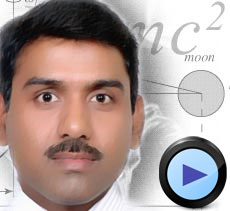










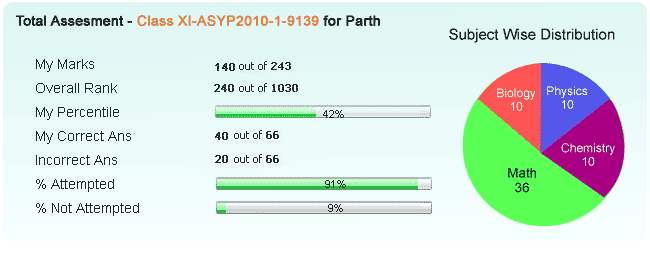




 This is an excellent website for the students to study and fabulous piece of work. Thank you TopChalks for bringing best teachers in my home.
This is an excellent website for the students to study and fabulous piece of work. Thank you TopChalks for bringing best teachers in my home.


